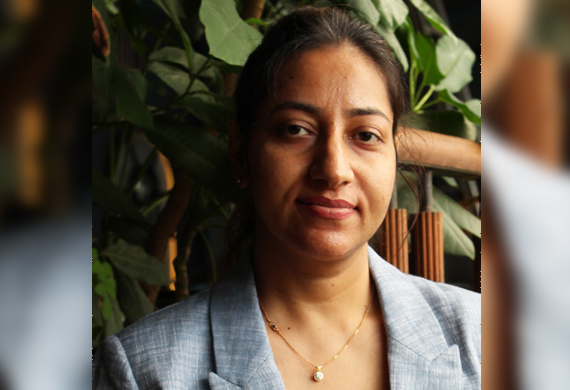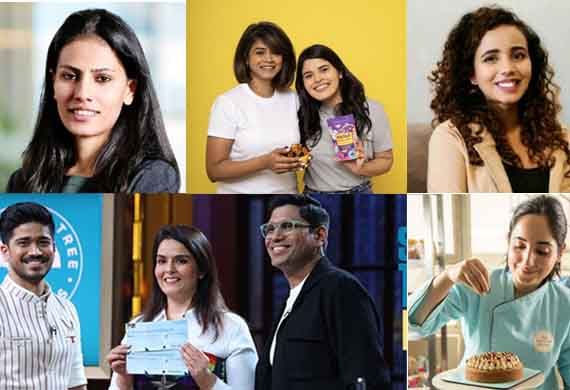Leaders

Kanupriya Gupta: Holistically Merging Sustainable Concepts & Design Aesthetics
KanuPriya Gupta
CEO
Mumbai is the city of dreams. However, the financial capital of India is also the world's second most densely populated city, with over 20,000 people per square kilometer. Space, is a luxury for Mumbaikars. KanuPriya Gupta, the founder & CEO of Clarus Interiors Consultants is well versed in the art of creating exquisite living space, irrespective of the space constraint. Skilled in carrying out minimalist designs, that have been in high demand across Mumbai, KanuPriya believes in making life a better place to live for all her clients.
The skilled interior design is also a climate warrior and infuses elements of sustainability in all designs. She chooses to use sustainability as a foundation in her design concepts, without having to compromise on the design aesthetics. An interior design graduate from the NEW York Institute of Art and Design, she combines woods, stones, and marble to develop interior structures that are natural and highly durable. She also insists on utilizing non-toxic materials and products that are emission-free and have minimal or no VOCs.
In a candid interview with the Women Entrepreneur team, KanuPriya Gupta introduces us to Clarus Interiors and shines the light on the sustainable design elements that the firm has gained mastery in.
Introduce us to clarus interiors consultants. What factors make the firm unique and a client favorite?
I founded Clarus Interiors Consultants as a freelancer, with the intention of subsequently turning it into a business which I did it in 2014. We are primarily focused on home interiors. We are a small company of two to three interior designers and another two employees who handle customer interactions.
We at Clarus minimize the waste and increase product reusing and longevity by using natural and highly durable woods, stones, and marble to build interior structures. We strictly adhere to the use of non-toxic materials and products for furnishings and accessories that are emission free and contain little or no VOCs. We have a vision to make life a better place to live, so we try to use sustainability as a foundation in our design propositions while not compromising design aesthetics.
When we onboard a client, our staff begins with analyzing the clients' needs, presents ideas & layouts, and develops solutions that meet their needs. I operate as a principal designer for the clients. I first have a chat with the clients to understand their viewpoint, and then I direct my interior designers. We'll have the clients finalize the designs before moving on to the execution stage.
Take us through your early educational journey and your priory industry experience before establishing clarus. What factors motivated you to venture into the field of interior design?
I received my master's degree in computer application. But later, I realized that the corporate sector was not my cup of tea. I wanted to do something on my own, so I came up with the idea of interior design. I began researching institutions and courses and decided to pursue it from the New York Institute of Art and Design, which was a distance education programme, as I was based in Mumbai. I completed the graduate course from New York University in 2013. Following that, I was offered a job with one of the interior design firms, and I started working on my own as a freelancer.
What are some of the most challenging aspects of running clarus interiors as the CEO? How do you counter these roadblocks?
Prior to the pandemic, I used to only handle the designing aspects for clients. I soon observed that the output was not the same as I had designed because the controls were in different hands. People are looking for a personal touch from designers, and they expect it from experts. So simply designing wasn't enough; we needed to go further, which necessitated the hiring of expert interior designers who work one-on-one with clients, and putting this type of framework in place is a challenging task for me.
I don't believe in hiring experts for each task; instead, I want someone who is familiar with all aspects of interior design, including communicating with clients, offering solutions and budgets, executing the task, and finally supervising and delivering the final product. I look for a skilled interior designer who can oversee the entire process and provide the end product. One professional will execute one project at a time. In this manner, I intend for my company to operate.
Clarus gives ample emphasis towards incorporating sustainability in every aspect of its work. What steps do you take to incorporate sustainability within your designs?
Working in Mumbai, we are well aware of the limitations of space and the diversity of needs, and we are excellent at executing the minimalistic interior style that the majority of our clients desire.
“We constantly keep money-saving or investment-enhancing possibilities in mind when planning the space”
We are more interested in sustainable design, that is, design that is more alive and can last for more than 15-20 years. I prefer to use materials that are simple to maintain, long-lasting, and resistant to the weather conditions in Mumbai. We employ materials that are both reusable and recyclable. In terms of longevity, our clients are very pleased with our solutions.
Apart from natural materials, we employ composite materials that can be readily recycled, are space-air enhancing, and have properties such as fire resistant, termite resistance, and high density to improve the quality of air we breathe.
We constantly keep money-saving or investment-enhancing possibilities in mind when planning the space. We include energy-efficient lighting, low-energy automation systems and appliances, water-efficient appliances, and renewable energy technologies such as solar panels, all of which contribute to lower energy bills, long-term cost savings, and a high resale value of your home.
We assist clients in designing doors and windows with uncompromising comfort and sunny interiors to improve indoor air quality and minimize the rate of allergy, asthma, and sick-building syndrome. For furniture and accessories, we firmly adhere to using non-toxic materials and products that are emission free and have minimal or no VOC content.
How do you keep yourself well aligned with the various trends that periodically evolve and develop within the interior design industry?
In my free time I enjoy reading articles written by Elle Decor. I watch various shows on Netflix about new and inventive interior designs, such as beautiful homes and other series on interior design and new materials in the market. I read a lot of magazines.
Given the time consuming nature of your role, how do you strike a balance between your work and personal life? As a successful businesswoman, what would you advice be to young women who aspire to follow in your footsteps?
My partner is a banker and I am a mother of two children. I have certain responsibilities towards my children as well, but I haven't thought about balancing my job and personal lives because they both run simultaneously. All of these things are routine activities in our daily lives, and we must handle them all. Both of these things are important to me, and I make time for them depending on their priority.
Women of this generation do not require any advice; they know what they want and do what they want. Sometimes working with them has taught me a lot of things. All I tell them is to follow their dreams.
Kanupriya Gupta, CEO
We are more interested in sustainable design, that is, design that is more alive and can last for more than 15-20 years. I prefer to use materials that are simple to maintain, long-lasting, and resistant to the weather conditions in Mumbai.






